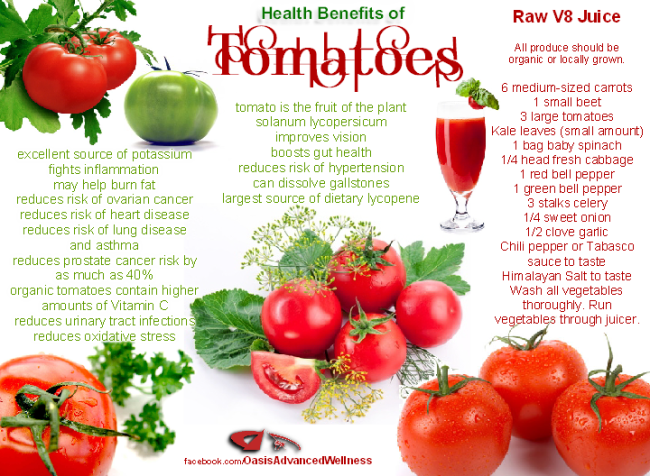1 | Don’t skip meals. When you get too hungry, you’re less likely to make healthy choices. October 2010
2 | Never go on a diet when you’re under a lot of stress. April 1974
3 | Ideally, you should try to lose no more than 1 to 2½ pounds a week. January 1954
4 | A short bout of exercise each day is more effective than longer, less frequent periods. June 1939
5 | To lose weight for good, know that you can’t go back to your old eating habits. You’ll need to change your lifestyle. April 1974
6 | Eating too little can backfire. Never have less than 1,200 calories a day—or you may slow down your metabolism. April 2006
7 | Don’t grocery-shop when you’re hungry. You’re likely to make high-fat, low-nutrient impulse purchases. January 1994
8 | For a fit and toned figure, dieting alone isn’t enough. You also need to exercise. February 1979
9 | A slipup doesn’t have to lead to an entire day of overeating. Resolve to make better choices at your next meal. December 2010
10 | Cut down, not out: Trim portions of food instead of removing entire categories (carbs, fats, etc.). January 1966
11 | Have breakfast. People who do so tend to eat fewer calories throughout the day. April 2007
12 | Pump up your protein intake early in the day. Protein is digested at a slower rate than simple carbs, so you’ll feel full for longer. October 1966
13 | Eat slowly and savor each bite. You’ll be satisfied with less food. January 1958
14 | If you have trouble controlling how much you eat of a favorite food, such as ice cream, do not bring it into your home. Eat it only in restaurants. April 1974
15 | Make lunch at home and bring it to work. It will probably be more nutritious and have fewer calories—not to mention cost less. June 1961
16 | Get enough sleep. You’re more likely to give in to cravings when you’re tired. January 1994
17 | Only eat when you’re seated at the table. You’ll do less unplanned nibbling. April 1974
18 | Keep your portions in control by never eating straight from the box or bag. June 2003
19 | Save some calories for snacks between meals. June 1961
20 | Hate to waste food? Instead of eating your children’s leftovers, save that uneaten half-sandwich for the bird feeder. April 1982
21 | Drink a big glass of water at the start of every meal to help you feel full. January 1994
22 | End every meal with a large, filling glass of water, too. June 2003
23 | Keep a food journal. It holds you accountable. April 1967
24 | Use small plates. Research shows that you’ll eat less because you’ll think you ate more. March 2009
25 | Don’t have a big lunch and a big dinner on the same day. If you overeat at one meal, cut back at the next. July 1982
26 | Don’t think about what you can’t eat. Focus on what you can eat more of: fruits, vegetables, whole grains, fish, legumes and nuts. August 2006
27 | Choose water-packed tuna rather than oil-packed—and you will cut calories by almost a third. February 1979
28 | Use nonstick spray to sauté foods. Or rub oil onto the pan with a paper towel for the lightest possible coating. April 1987
29 | If you must have goodies around for your family or for company, don’t make or buy your favorite kind. May 1991
30 | Invest in single-serving containers and use them for leftovers. That way, you won’t polish off everything. October 2007
31 | Use a tiny spoon when sampling, and if you’re doing it a lot, eat less for lunch or dinner. The calories from those little tastes you take while cooking can really add up. October 1989
32 | Let your toast or baked potato slightly cool before buttering so it absorbs less. May 1969
33 | Prepare slow-to-eat foods: hot soups, uncut lean meat, whole fruits. May 1991
34 | Always keep a container of cooked brown rice in the fridge for a quick, lowfat addition to leftovers. January 1994
35 | Chew sugarless gum while you cook so you won’t nibble. January 1994
36 | Switch to mustard. It has no fat, versus the 11 g in 1 Tbsp of mayonnaise. August 2007
37 | If you have the room, keep small exercise equipment (such as free weights) in the kitchen. You can get in a few reps while you’re waiting for something to cook—and the sight of the gear will stop you from munching. April 1982
38 | Shop the perimeter of the grocery store, where most fresh fruit, vegetables, chicken, fish, eggs and dairy are all located. Venture into the interior aisles only with a list in hand. April 1987
39 | Forget about frying your fish, poultry or other cuts of lean meat. Only broil, roast or grill them. January 1958
40 | Don’t serve family style—make up a plate. And when people want seconds, let them help themselves. April 1987
41 | Make stews and soups ahead of time and refrigerate. Excess fat will float to the top, making it easy to remove before reheating. October 1989
42 | Give away temptation. After a dinner party, pack up the dessert and give it to your departing guests. May 1969
43 | Flavor your meals with fresh or dried herbs and spices, salsa, vinegar or lemon. March 2009
44 | Plan, plan, plan. Not having healthy options on hand (or in mind) makes it too easy to resort to fast food, especially when your family is clamoring for something to eat. October 2010
45 | Before going to a restaurant, check out its menu for the lightest dishes. Many places post calorie counts online. October 2007
46 | Wear fitted clothes or a slightly tight belt when dining out. The feeling of restriction will send “stuffed” signals to your brain. April 1987
47 | Scope out everything that’s available at a buffet or dinner party before eating. Save about a quarter of your plate for the high-cal stuff and the rest for lighter foods, such as cut-up vegetables and hummus or mini grilled chicken skewers. July 2010
48 | Have the bread basket removed as soon as you sit down at a restaurant. This calorie bomb is a big diet downfall. August 1969
49 | In a group, be the first to order so you’re not influenced by your friends’ choices. September 2009
50 | Be picky. At a family gathering, skip the food you can get anywhere and only eat the special dishes, like Grandma’s potato salad. You’ll feel more than satisfied without inhaling hundreds of extra calories. December 2009
51 | Order the simpler dishes. They’re often less fattening because they don’t have any sauce. October 1989
52 | Think of your waiter as your aide in cutting calories. Ask him to keep your water glass filled, to double the side of veggies and omit the starch. July 1982
53 | Eat a snack before going to a party. Arriving with an empty stomach is a recipe for disaster. November 1998
54 | Always ask for dressings and sauces on the side. April 1987
55 | At a restaurant, eat only half your meal and take the rest home in a doggie bag. Or ask your dinner partner to split a meal. May 2003
56 | If you like munching while watching TV, take up knitting, sewing or doing your nails—anything that keeps your hands busy. May 1990
57 | Savor what you’re eating, especially the first two bites, which are the most flavorful. This trick can help you eat less—you may decide that some treats aren’t worth the calories. April 2007
58 | Stash apples, bananas, oranges or whole-grain crackers in your bag so you’ll always have a low-cal snack on hand. July 1982
59 | Be aware that a craving takes 20 minutes to go away. If you can distract yourself for that long, you probably have it beat. April 1974
60 | Brush your teeth or rinse with mouthwash when you have a craving. The clean taste may dampen your appetite. October 1989
61 | When that bag of caramel popcorn won’t stop calling your name, close your eyes and visualize eating 30 pieces—imagine the crunch, the salt, the stickiness. Chances are you’ll eat less than usual. April 2011
62 | Enjoy only the best. If you’re dying for chocolate, just a few high-quality squares should do the trick. October 1989
63 | Eat what you’re craving in its healthiest form. For instance, go for a baked potato instead of fries. June 2003
64 | One of the best ways to rev up your metabolism is to do strength-training exercises at least twice a week. Building muscle makes your body more efficient at burning fat throughout the day, even when you’re resting. August 2006
65 | Tape your favorite TV shows and watch them only when you exercise. June 2003
66 | Be sure to wear supportive sneakers and comfortable clothes so you feel good during exercise. February 1940
67 | Get into a regular routine. You’ll find that as you get fit and healthy your appetite may change, especially for junk food. September 1978
68 | Create a shorter walking route for days when you’re busy and pressed for time. It’s far better than doing nothing at all. April 2003
69 | Work out first thing in the morning, so it’s done no matter how crazy your day gets. November 2009
70 | Remember that small changes add up. You can lose 12½ pounds in a year just by giving up butter on your toast. January 1994
71 | Exercising in a group or with a friend makes a workout less dreary, so you’re more likely to stick with it. March 1954
72 | Set small goals and as you reach each one, reward yourself: a new book, a spa treatment, whatever appeals to you. July 1966
73 | Crank up fun music with a fast beat while you work out. It will make time fly. February 1998
74 | Instead of thinking you deserve to eat something, think that you deserve to be healthy and happy. May 2009
75 | Hang a calendar in a prominent spot and mark the days you work out and eat right. Seeing evidence of your hard work will inspire you to keep it up. January 2010
Source: Women’s Day Staff
























